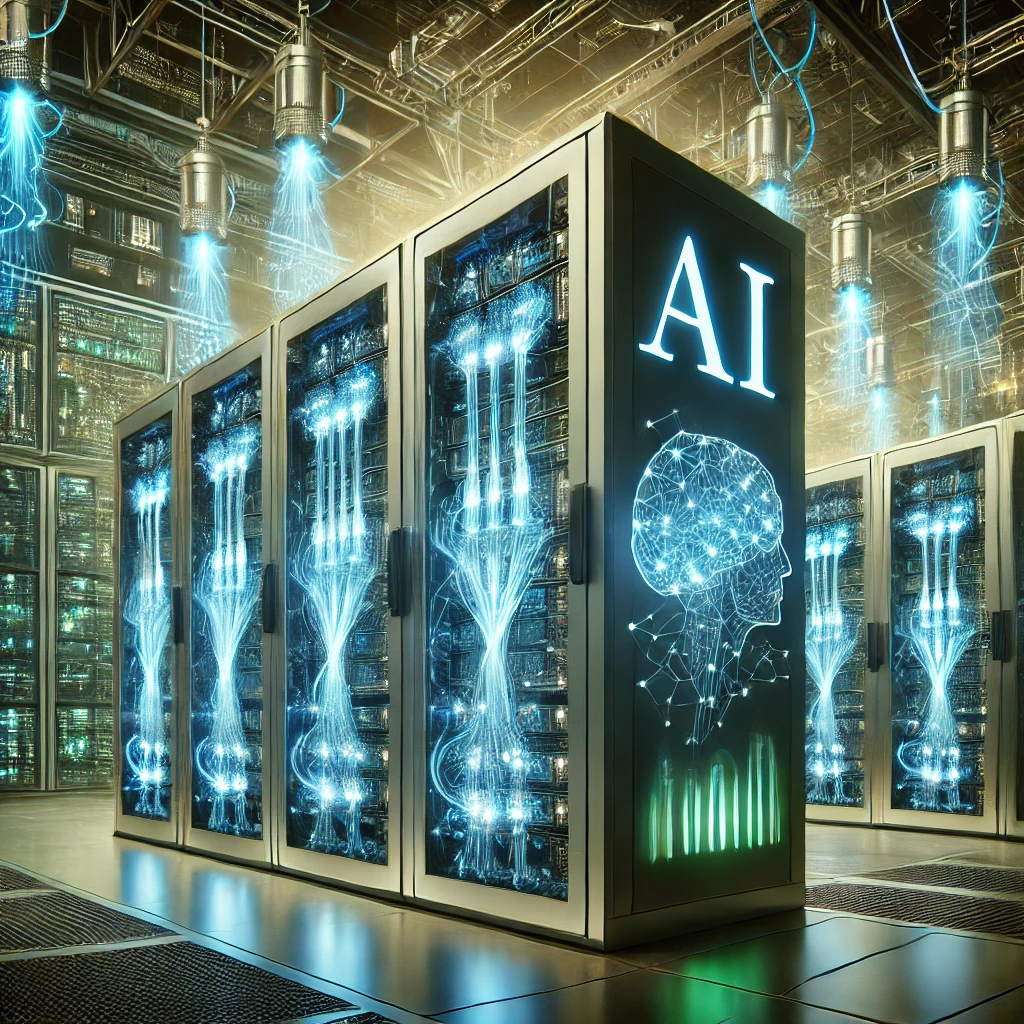As Artificial Intelligence (AI) continues to revolutionize industries, from healthcare to finance, it is also driving a significant increase in global electricity consumption. A key contributor to this surge is the growing number of data centers designed specifically to support AI infrastructure. These AI-centric data centers are demanding unprecedented levels of power, leading to concerns about the environmental impact and the need for more energy-efficient solutions.
The Growing Demand for AI-Powered Data Centers
Data centers have long been the backbone of the digital economy, powering everything from cloud services to social media. However, with the rapid development of AI technologies, there is a rising demand for specialized data centers capable of handling the massive computational requirements of AI models. These facilities house powerful servers that support machine learning (ML), deep learning, and natural language processing (NLP) algorithms, often requiring thousands of GPUs or custom AI chips.
AI models such as ChatGPT, AlphaFold, and autonomous driving algorithms require intensive training that can take days, weeks, or even months. This training process consumes enormous amounts of electricity. In fact, studies have shown that training a single large AI model can consume as much energy as several hundred households over a year. Multiply this by the thousands of AI models being developed and deployed, and the resulting energy demand is staggering.
AI’s Power-Hungry Data Centers
Traditional data centers already consume about 1% of global electricity, but AI-focused data centers have pushed this percentage higher. These AI-driven facilities require more energy per square foot than traditional data centers because of the need for specialized hardware, such as graphics processing units (GPUs) and tensor processing units (TPUs), which are much more power-hungry than conventional servers.
On top of that, AI workloads require constant cooling. As GPUs and TPUs operate at full capacity, they generate significant heat, leading to an increased demand for advanced cooling systems. In some cases, cooling systems alone can account for up to 40% of a data center’s total power consumption.
Geographic Shifts and Environmental Impact
The increase in demand for AI-focused data centers is not only contributing to higher electricity consumption but is also causing geographic shifts in where this power is being used. Many data centers are located in regions with low-cost electricity, such as the Pacific Northwest in the United States or parts of Northern Europe, where renewable energy sources like hydroelectric power are abundant. However, in areas where renewable energy is not as accessible, data centers may rely heavily on fossil fuels, exacerbating environmental concerns.
Moreover, the demand for new data centers has led to the construction of facilities in regions where energy infrastructure is already strained. This raises concerns about local power grids’ ability to support not only data centers but also the surrounding population and industries.
The Search for Energy Efficiency in AI
As the global demand for AI accelerates, tech companies are increasingly seeking ways to mitigate the environmental impact of their AI-driven data centers. Efforts include optimizing hardware for greater efficiency, developing AI models that require less computational power, and implementing more sustainable cooling solutions.
Companies like Google and Microsoft have already started to invest heavily in energy-efficient AI hardware and renewable energy to power their data centers. Google, for example, has committed to running its global operations on carbon-free energy by 2030, and its AI systems are being trained to optimize the cooling systems in its data centers. Meanwhile, Microsoft has pledged to be carbon negative by 2030, relying on AI to help reduce energy consumption in its cloud and data center operations.
Startups are also entering the scene, focusing on more sustainable and energy-efficient AI computing. These companies are designing AI chips that use less power while still delivering high performance, a key innovation that could reduce the overall energy footprint of AI applications.
Policy and Regulation in the Energy-AI Space
The increasing energy demand of AI-driven data centers is starting to attract the attention of policymakers and environmental regulators. Governments in various countries are exploring regulations that limit energy consumption in data centers or provide incentives for companies to adopt more energy-efficient practices.
In some regions, data centers are required to use a percentage of renewable energy, and tax incentives are being offered to companies that prioritize energy efficiency in their AI infrastructure. These policies aim to push the industry toward greener practices while accommodating the growing need for AI-powered computing.
The Future of AI and Electrical Demand
As AI continues to transform industries and society, the demand for specialized data centers will only increase. This growth will bring more focus on how the industry can balance its need for computational power with sustainability goals. New metrics like Intelligence Per Electrical Watt (IPEW), as well as advances in energy-efficient hardware and AI models, will play an essential role in curbing the environmental impact of AI.
The coming years will likely see more collaboration between AI developers, data center operators, and environmental advocates to find innovative solutions that meet the high demand for AI computing without overwhelming global energy resources. Ultimately, the future of AI will depend not only on its intelligence but on how efficiently that intelligence is powered.



